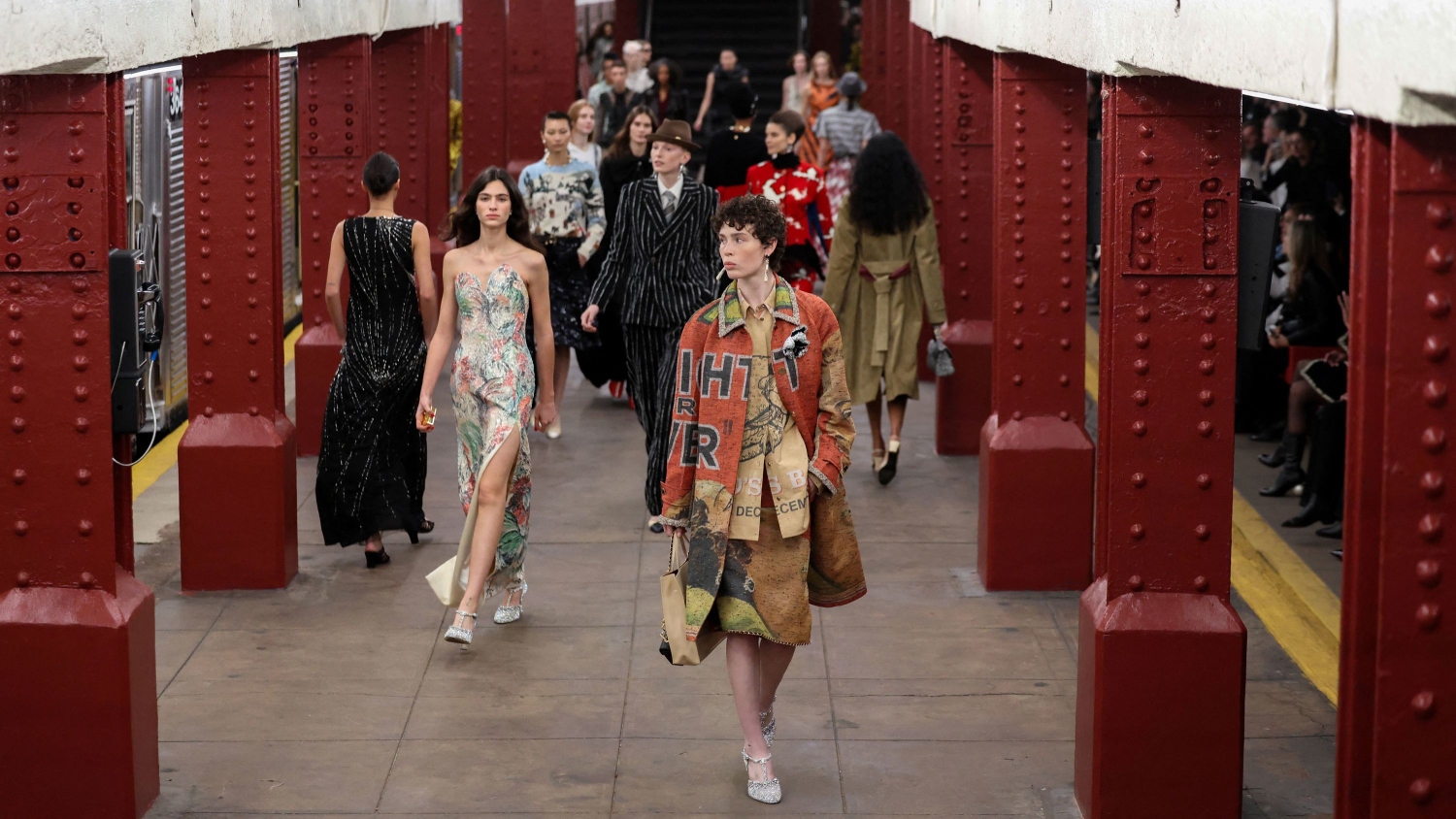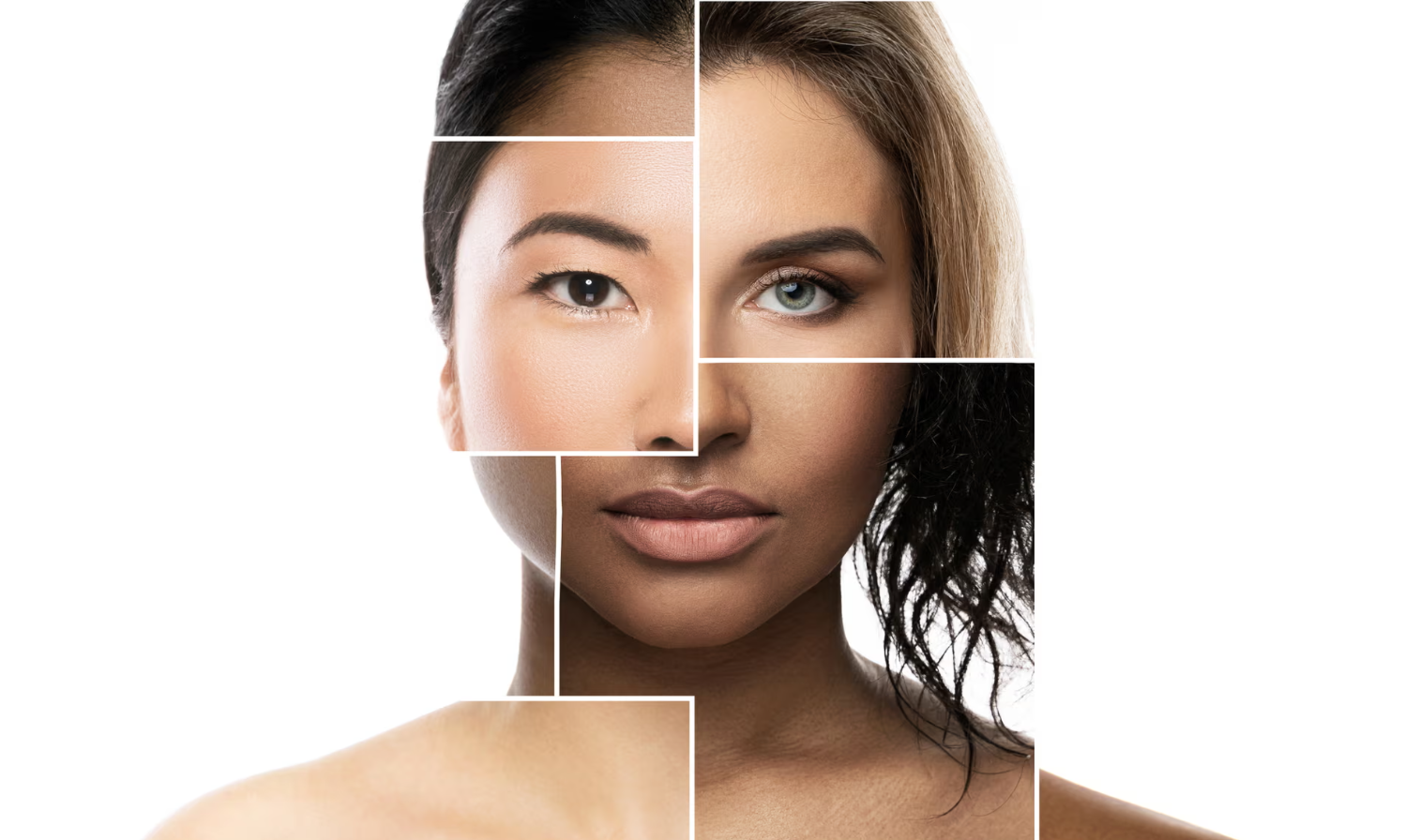
This article is more than
1 year old
The idea that splashing out on nail, hair, eyebrow and lash treatments increases your chances of a better social life, relationships and jobs has taken a firm hold on social media – but what’s driving it?
For Hazel Wood, getting a beauty treatment is not just an occasional treat. The 28-year-old influencer spends about £500 a month on grooming appointments, including £80 on pedicures and manicures, £70 on eyebrow lamination (where a chemical solution is used to straighten and reshape brow hair) and £60 on her lashes. On top of this, she pays about £250–£300 on Botox every three to six months.
These treatments, she says, play a vital role in her life. “It makes me feel as if I’m showing up as my best self. When I don’t feel I’ve made myself look very nice, I struggle to feel confident and productive, and I also have a hard time interacting with people.”
“That’s not to say you need all these things done to be beautiful,” she adds. But for her, getting all these things done “makes me feel more capable in both my personal and professional life”.
Wood’s professional life involves spending a lot of time on camera – making content for TikTok, Instagram and YouTube about where she shops and what she eats – a lot of which is sponsored by high-street and fast-fashion brands. She forks out her own money and time on frequent beauty maintenance treatments. “I don’t particularly enjoy getting any of the treatments if I’m completely honest,” she says. “I’m the sort of person that loves to keep busy. When I have these treatments booked in, I just think that’s a couple of hours out of my day that I’m never going to get back.”
So why does she do it? “It helps me save time in the morning,” she says. “I’m already put together, so my day can start off more efficiently because I don’t have to spend time getting ready.”
In recent years, the concept of “beauty maintenance days” has grown online, especially on platforms such as TikTok. The hashtag #beautymaintenance has amassed more than 112.7m views on the platform, with the idea being that by booking in semi-permanent treatments such as a lash lift (so you don’t feel the need to curl your eyelashes each morning), or an eyebrow treatment (so you won’t need to spend time pencilling them every day) you will save time overall during the month.
Perversely, part of this trend is also about not looking too done or made up. As one Vogue article described it recently: “The irony about wearing makeup is that oftentimes, we prefer it to look like we’re not wearing any at all.” The hashtag #highmaintenancetobelowmaintenance has more than 70m views on TikTok. These enormously popular videos feature users meticulously documenting their trips to the nail salon, brow and lash bars and going for laser hair removal. What they show is that a so-called “low maintenance” or “natural” appearance is anything but. Looking natural is now a beauty standard so rigorous that it requires at least a full day’s commitment each month.
So how did we get here? While the pressure on women to look a certain way and spend time and money on achieving unrealistic ideals is far from new, during the pandemic, many people undertook more demanding beauty regimes. While hairdressers and salons were shut down, experimenting with DIY treatments at home became popular – according to one 2022 Mintel study, 38% of women aged 16-24 made changes to their beauty and grooming routines. And, while retail as a whole took a hit in the cost of living crisis, beauty retail remained relatively stable in 2023, because, according to Mintel, grooming was considered by many to be an “affordable luxury” when times are hard.
Charlie Shepherd, 29, a communications manager from London, began a skincare routine in lockdown. What began as a way to pass the time is now a permanent part of her routine. She spends £80 on getting her nails done and £60 on beauty products each month. Every few months she will spend £200 on a facial and a haircut.
“It’s about the experience,” Shepherd says. “It’s a social activity, a confidence booster, and something I do completely for myself.” She never misses her fortnightly manicure. “It makes me feel confident, especially since I’m in the dating world, and when you are talking to people, you use your hands a lot, so I feel like I’m well put together.”
It is well documented that the pandemic encouraged many to ditch the notion of a beauty regime altogether, letting their grey hair grow out, or leaving body hair intact. Market research company Kantar found that makeup sales had dropped 19% since 2019, which was partly because of the pandemic.
However, things have bounced back remarkably quickly. Spending in beauty salons and at hairdressers increased to more than £8bn in the UK in 2023, up from 2022 and almost back to pre-pandemic levels. The boom in so-called beauty influencers has also had a significant impact on beauty maintenance trends. In 2023, the global influencer marketing industry was estimated to be worth $21.1bn (£16.bn), according to Forbes, while spending on influencer marketing is expected to outgrow advertising spending on every single platform. That is a lot of money being spent by advertisers on influencers whose livelihoods depend on how they look, encouraging us to spend to look like them.
The pressure to conform to these beauty standards can have more serious consequences. Wood admits to reversing her lip filler procedure this year, only keeping “the tiniest amount left”. She first had the procedure when she was 22. “I think the problem with lip filler is, once you start, you don’t realise how big they’ve gone. You have more and more,” she says. “There’s a lot of pressure online because we see everyone having it done, and then you assume that your face isn’t normal because you don’t look like that.”
Heather Widdows, a philosopher and author of Perfect Me: Beauty as an Ethical Ideal, thinks that beauty has gone beyond providing social value – and that it is now an ethical imperative. “People think looking better means you will have a better life. We’ve bought into the ideal that this will mean better relationships and a better job, so it’s become a dominant value for people,” she says.
The pressure to maintain a certain appearance isn’t felt equally across all demographics, however. Black women, for example, often spend six times more on beauty products and services than their white counterparts, according to the British Beauty Council. And, despite comprising only 2% of the UK population, Black women account for 10% of the UK’s hair care expenditure, according to the Office for National Statstics. And yet, according to one report, white influencers get paid on average 50% more than their black, Asian and minority ethnic counterparts. These statistics explicitly show the disparity in beauty upkeep for Black women, and also highlight why some Black women feel the need to reach an unrealistic standard of beauty.
Yet not everyone is embracing the escalating demands of beauty maintenance. A growing number of women are finding liberation by rejecting the routines that once dictated their lives. Nifemi Kesinro, 23, a student experience officer, is among them. “My hair and nails were always an absolute priority for me,” she says. “I would do a range of services on my hair, but the main thing for me was outsourcing it. Even if it was just a wash and blow dry, I’d pay.”
Braids, her go-to hairstyle, demanded regular appointments every six to eight weeks, costing between £150 and £170 per session and taking up to eight hours. Kesinro soon realised the financial strain was becoming unsustainable. “It was too expensive; I felt like I was trying to maintain a standard of beauty that was unrealistic,” she says. And so she embraced her natural hair, which was not without its difficulties.
“Styling my hair for work is the biggest struggle; the anticipation of going into the office can fill me with dread. I find it particularly difficult because I feel like it has to have a level of neatness. Rather than wearing it in an afro or up in a high ponytail, I put it in a slick bun or cornrows. While I don’t mind wearing these hairstyles, I don’t enjoy feeling restricted … and the time it takes makes mornings very stressful.” She founded Candid Conversations about our Curls, a community where Black women can share their experiences and support each other. “Watching women candidly discuss how beauty standards affect them is refreshing,” she says.
“There’s pressure to look a certain way within our community, and I think it’s down to Black women’s perception of beauty and also consumer culture, and the truth is, in my generation (gen Z), it’s easier to fit in than go against the grain.”
Kesinro feels a sense of freedom in her decision but still acknowledges that the journey continues. “It requires a lot of patience and consistency,” she reflects. “Living in a digital age doesn’t make it easier, seeing posts online of women who look a certain way. But confidence comes from within and so I recognise that beyond what my hair looks like I am beautiful.”
The community that Kesinro has built offers a sense of sisterhood and liberty in accepting that there are many different definitions of what is beautiful. “One of the most special parts is hearing people’s stories of wearing their natural hair to work for the first time in years. Also, listening to the ladies who aren’t ready to wear their natural hair out engage in conversation and being willing to explore their own biases and opinions on natural hair has been liberating for us as a community.”